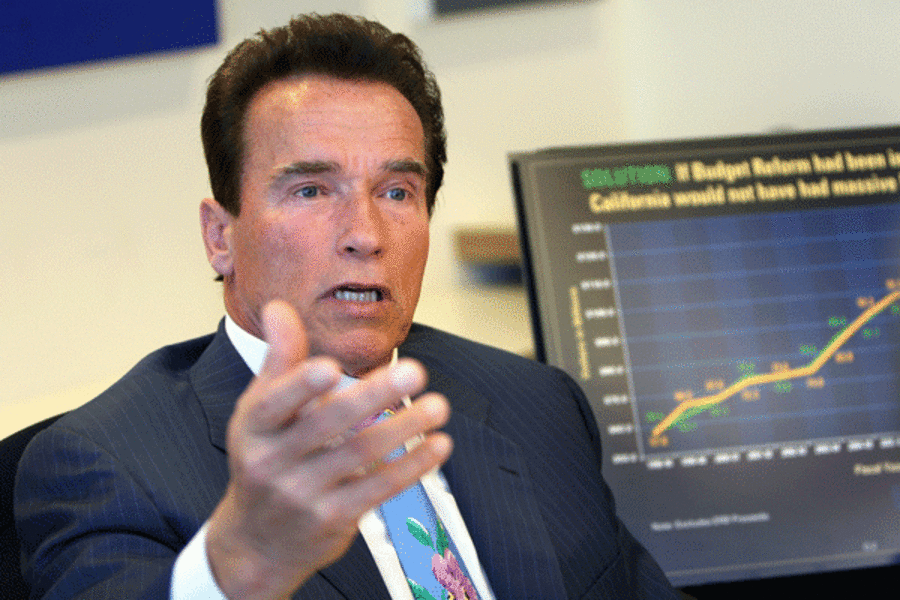New state budget plans burdened by recession, pension costs
Loading...
Across the US, states have launched into their 2011 fiscal year saddled with many of the same budget problems that they had the year before: low tax revenues, high recession-related expenses, and uncertainty about how to pay for long-term costs such as retiree pensions.
Fully 46 states have a fiscal year that starts July 1.
America's most populous state, California, entered the new fiscal year without a finalized budget in place. New York is still scrambling to put in place a budget for its fiscal year, which started April 1. And in Illinois, burdened by a big pension shortfall, the state budget plan relies on new borrowing as the state's credit rating slides.
Pension woes are a nationwide theme, as states struggle with either chronic underfunding, the effects of recession on investment portfolios, or both. This suggests that budget pressures could persist, even once the economy moves back to higher ground.
"What is hurting California is the same thing that is hurting governments and the economies all around the world," Gov. Arnold Schwarzenegger said in a video address to Californians last week. The problem, he said, is "unsustainable costs" and not just the recession-related fall in tax revenues.
Although the troubles states confront are common, the magnitude varies. California and Illinois are among the worst off. Many states managed to launch into the new year with balanced-budget plans.
In an election year, and with many taxpayers themselves struggling financially, few states are raising taxes much. So spending cuts feature prominently in the budget plans, with New Jersey closing an $11 billion gap by reducing outlays, for example.
"The main driver of state and local budget pressures is a fall-off in income taxes," economist David Greenlaw of Morgan Stanley said in a written analysis Tuesday. But, he added, pension challenges "are likely to lead to ongoing pressures on operating budgets in the years ahead."
Governor Schwarzenegger, a Republican, said 80 percent of California's state spending goes to pay wages and benefits for employees. He blamed Democrats in the Legislature for trying to fix the problem partly with tax hikes. Democrats control the Legislature but can only approve tax increases and budgets with a supermajority that currently requires some Republican support.
The major issues facing states include:
• Medicaid. The recession means more people are relying on this program to cover health-care needs, pushing up this already-large cost for states. Most governors have collectively asked Congress for more than $20 billion to help cover the cost in the coming year.
• Tax revenues. Although the economy has been growing in recent quarters, a pickup in state tax revenues tends to lag a bit behind such trends. In the first quarter, for the first time since the third quarter of 2008, states reported a year-over-year uptick in tax revenue. But this trend, tallied by the Rockefeller Institute, stemmed mainly from legislated tax changes in two large states: California and New York. Nationwide, the month of April saw a 7.6 percent decline in income-tax revenues, compared with April 2009.
• Payroll and pension costs. States have cut about 18,000 jobs (less than 1 percent) since the middle of 2008. Local governments have cut more deeply – 158,000 or 1 percent of jobs. Several states have negotiated with unions to boost the retirement age, but this generally affects newly hired workers. One study conducted last year, by Robert Novy-Marx and Joshua Rauh of the University of Chicago, estimated that state pensions are underfunded by $1 trillion to $3 trillion.
Related:





